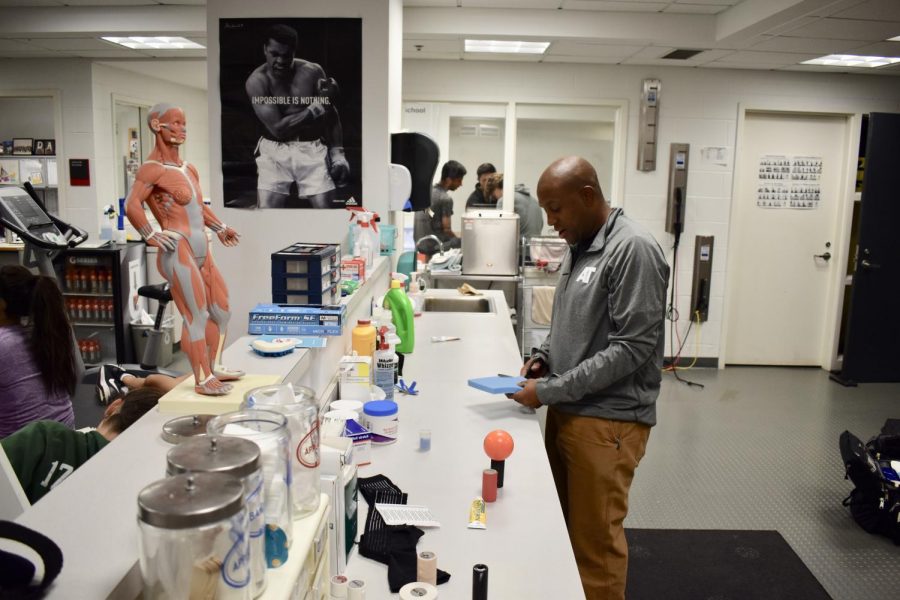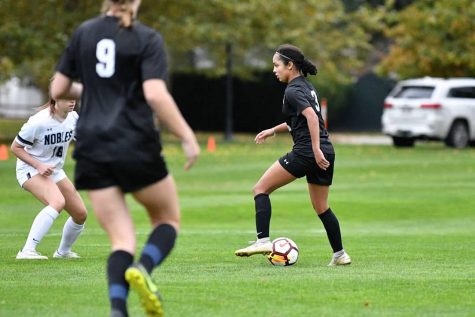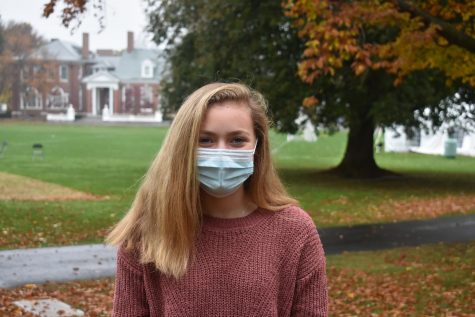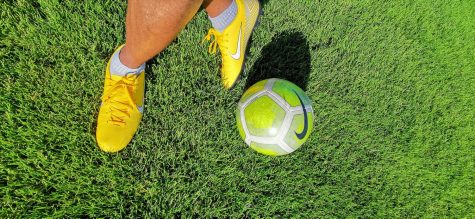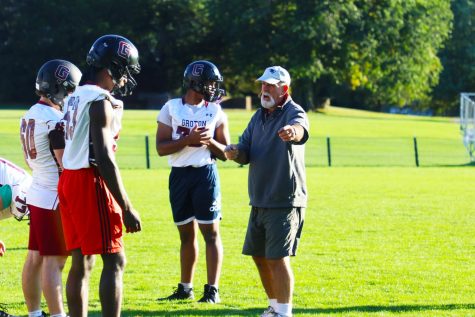Bruised and Broken: Athletic Injues
Consider this: so far this term, the athletic trainers have offered over 1,200 treatments for athletes, ranging from simple ice packs to full injury rehabilitation. In most winter and spring seasons, for reference, treatments average five to six hundred per term. Why the bump?
Every fall, there is a higher number of sports injuries compared to other seasons – this season is no exception. The main reason for the increase in treatments, head athletic trainer Art Cheeks says, is that some people go from doing no exercise all summer to having sports practice five to six days a week, which often results in – at the very least – sore muscles. However, some students are working out or are playing additional games outside of our athletics programs seven days a week and not giving their bodies any time to recover
The most common injuries that students come to the training room for are strains and sprains, caused by damage to the tendons and ligaments respectively. Mr. Cheeks says that, overall, such minor injuries are distributed fairly equitably among teams: “I think obviously there are certain sports with more people such as cross-country, which makes sense considering the high number of runners that come in. But, on average I would say that the injury rate is similar for most teams. We’re not seeing an overload on one team.”
But the work of treating athletes does not only occur in response to injuries. According to assistant athletic trainer Christine Alarcon, cross-country runners also come to the athletic trainers for preventative work as well. “They have a lot of soreness and tightness from running so much,” she says. “Most sores and sprains are maintenance problems. Occasionally there will be someone who will actually trip on a root and sprain their ankle, but most sprains and soreness are preventable.”
The athletic trainers recognize a difference between being hurt and being injured. An athlete in any sport may be sore, but management can ensure that such irritation is temporary and does not impact play. An injury, however, is more serious and can keep players off the field.
The rate of concussions, Mr. Cheeks says, has remained fairly consistent this year in comparison to past fall seasons. Mr. Cheeks says the number of concussions is not high on the list of injuries, although “it feels so because everyone is sensitive to it. Not every bump to the head is a concussion.”
How, then, can athletes prevent injuries? The answer is fairly simple: warming up and stretching before working out is crucial, says Mr. Cheeks, along with consistent exercise in the off-season. Over the summer, train for daily practices. Athletes must take care of themselves in order to contribute positively to their teams and to the Groton sports program.


